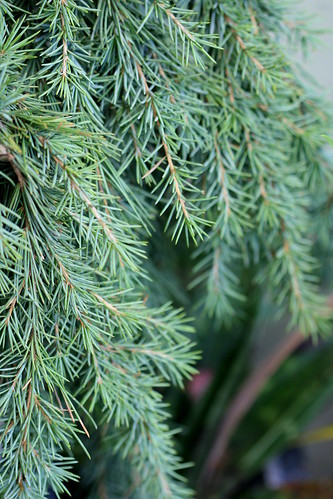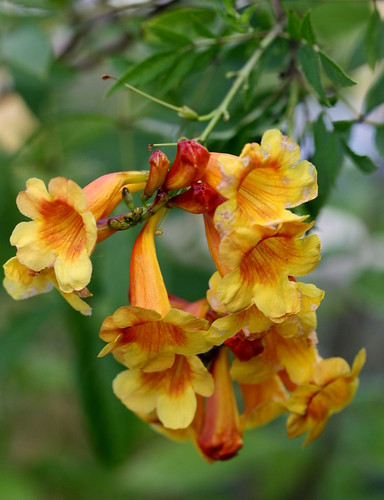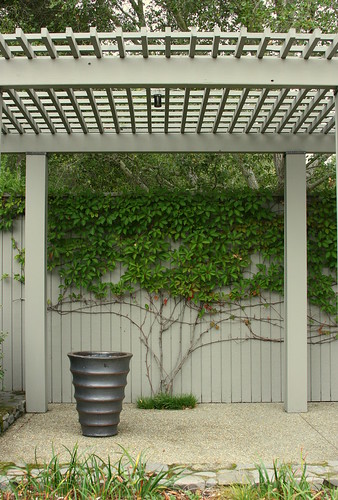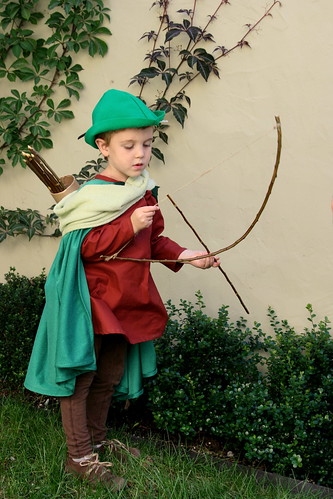I'm definitely enjoying the refreshed looking foliage in the garden right now. We got some rain, washed all the dust of the plants and the little extra water plumped things up again. Fall always feels like spring to me, everything coming out of its dry dormant summer phase. Of course, I don't mind the fall color either.
The Pistache and the Red-barked Maple are coloring up nicely this year. I've got 3 Pistache on one side of my house, plus 1 in my neighbor's parking strip I planted. I can't wait for them to all get big and really put on a show. I wish I could get all the people on my street to plant Pistache. I unfortunately live on one of those streets where the majority of people seem to be scared of street trees. Well, in a few summers when my house is nice and cool from the shade, they'll wish they had them too.
I won a weeping Deodar Cedar in a raffle at a recent Garden Conservancy seminar and it seems to have started me off on a conifer craze. I've always disliked conifers but have found myself coming around recently and wanting to use them here and there. Must have been all that time I spent photographing in the San Francisco Botanical Garden's conifer garden during Saxon Holt's class series. Anyway, thank you to Monrovia Nursery for donating the Cedrus deodara 'Feeling Blue' to the raffle!
I've also recently picked up this curly, chartreuse thing, whose name I'll have to dig out tomorrow, as well as some petite chartreuse Christmas trees.
I was a bit stumped at first when trying to decide what to combine the conifers with but I decided that succulents would work. My first impression was that they wouldn't look right together but I think I'm OK with it.
My Graptopetalum 'Uncrested' has recrested. May have to pull that section out because I prefer them less mutilated looking.
I dug out the original Manfreda (from Yucca Do) and every root end must have sprouted a new rosette. I kind of like them now because there are several sprinkled around one area and they look cute in a group.
I have a love/hate relationship with this Aloe greatheadii (snicker) spp. davyana. Right now I love it.
And I can't get enough of my Parthenocissus henryana. So lovely.
The spider-webby Eryngium venustum:
Delicate looking Dicentra scandens. Tried to rip it out at one point, couldn't, now I love it.
And my Beschorneria from Annie's is settling in nicely.
Here it is coming home with me:



















































